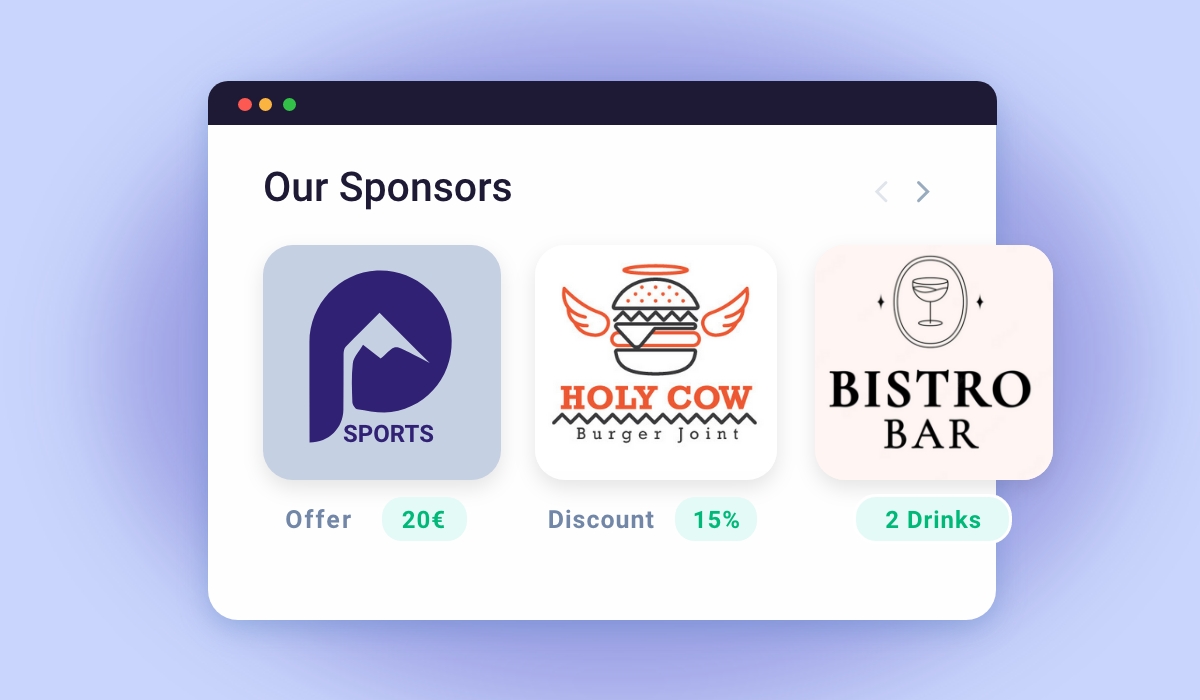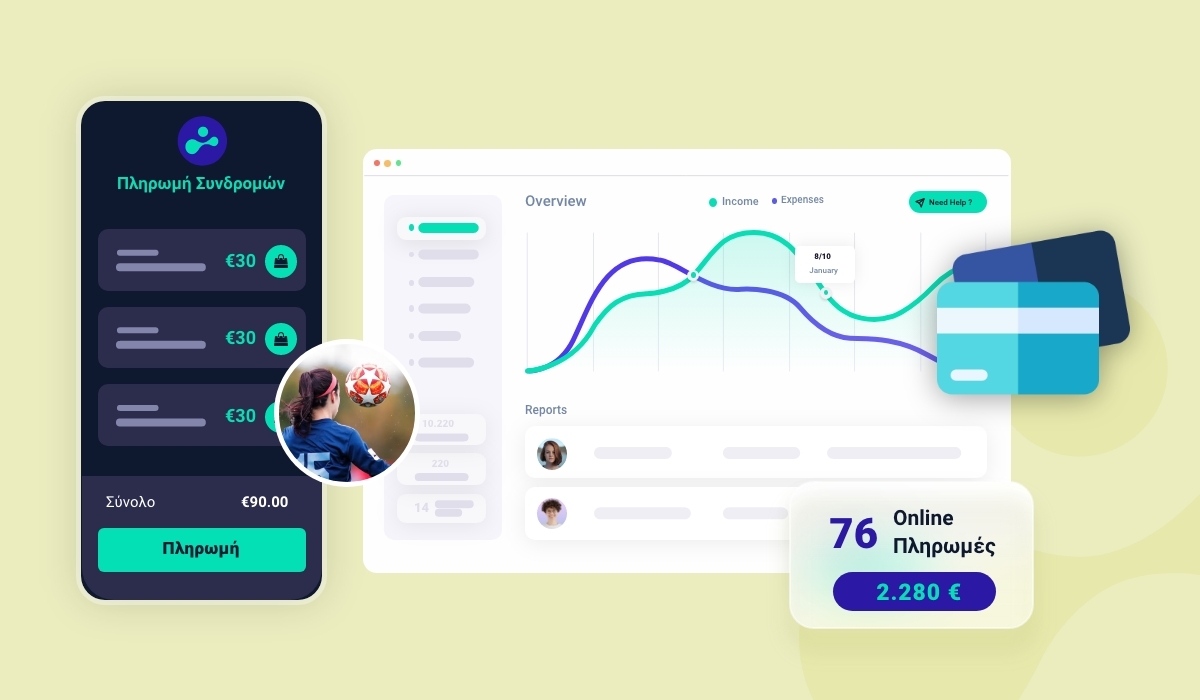“Receiving a sponsorship would be a real lifesaver”. “Once we convince the sponsor for greater investment, our problems are long gone.” These phrases are often heard behind closed doors of sports clubs’ offices, demonstrating the obvious: the search and the acquisition of sponsorships are crucial factors for the development and financial sustainability of sports clubs. Taking into account that sports sponsorships represent the most profitable source of revenue (given its relatively low cost), we realize its significance for the operation of a sports organization.
The ambition of every executive board is to renew the past sponsorships and constantly attract new ones. However, during the process of attracting and, eventually, reaching an agreement with potential contributors, various challenges emerge that must be confronted. That is the reason why it is essential for every executive board to possess a handbook that provides guidelines for the proper sponsorship program.
What is a sports sponsorship?
Sports sponsorship refers to the investment of capital, services, etc., in the operation of a sports club in exchange for access to the commercial exploitation of its activities1. This definition highlights the primary motivation for a brand’s collaboration with a sports club: the commercial revenues. You should keep that in mind throughout the process of attracting sponsors. However, successful sports clubs do not just aim to achieve such business agreements but also attempt to build long-term partnerships with sponsors with whom they share the same appreciation for the club’s activities and align with its vision. In a nutshell, our advice is the following: Don’t look for sponsors but for partners.
The Three Pillars of Sports Sponsorship
The maximum commercial exploitation of a team’s assets and image revolves around the successful management of the following parameters:
- Value of the product (e.g. the amount of registered members, the visibility of club’s website and social media platforms).
- Advertising spaces (e.g., practice and game jerseys, commercial use of sports facilities).
- Available rights (e.g., use of club’s logo and game image and, in general, rights that connect the sponsor with the sports brand).
These three pillars and their interrelation are essential for the successful pursuit of investors and, of course, for reaching an agreement. In this perspective, we will point out the main elements of a guide that will ensure a steady flow of sponsorships.
A Guide for Attracting Sponsors
In order for the guide to be effective, you must keep in mind the following: adopting a well-structured and systematic process is the cornerstone of striking agreements with sponsors. This means that our strategic approach must be governed by certain inviolable rules, which depending on each case can be modified.
A) Investigation of the field of potential sponsors & Preparatory Work
At the outset of this vital process, the administration of the sports club is expected to obtain the most thorough overview of the market. Sports club’s executives should explore the landscape of rival clubs’ sponsors (i.e. available packages, reciprocal benefits for the sports academy and the sponsor) and list potential partners. At the same time, during this initial stage, the available advertising spaces must be listed (pillar No.2). The executive board is responsible for compiling a list of the various spaces and rights that the team possesses for promoting the sponsor’s product. For example, these could include:
- Stickers in the arena
- Advertising banners at the club’s practice and game facilities
- Practice jerseys or t-shirts
- Promotion through social media
- Promotion through club’s official website
- Production of products that could include the brand name of the sponsor (notebooks, calendars, socks, sweaters etc.)
This first step lays the foundations for a sponsorship program.
B) Designing the sponsorship program
We now turn to the main part of the guide: the design of the sponsorship program. Here, there are two key parameters: the available rights (use of the club’s symbols, images from games and events, provision of advertising spaces, etc.) and the promotion advertising spaces (game jerseys, stadium banners, arena stickers, etc.). A successful sponsorship approach requires the exact determination of these two parameters.
The design of the sponsorship package can be divided into two tasks:
- the classification of potential sponsors and
- the pricing of each program.
Let’s delve into these two tasks.
-
Classification of Sponsors
Selecting the appropriate classification and assessing the distinct role of each category of sponsors contributes to the formulation of a comprehensive strategy with specific focus on each category. Thus, the sports club is able to develop a personalized approach to future sponsors and articulate in a clear way the benefits of the potential partnership. But what is the optimal classification? Following the example of the former CMO of FC Barcelona, Esteve Calzada (and adapting it to the needs of amateur clubs that is our focus)2 , we discern three categories of sponsors: the main sponsor, the technical support sponsor (e.g. sportswear, gym equipment) and the leisure activities sponsor (forms of entertainment like cinemas, restaurants etc.). The primary concern of the club is the allocation of rights and advertising spaces with the highest commercial value to the top sponsor, namely the main sponsor. This classification allows for a more comprehensive understanding of the club’s diverse needs and the benefits of the sponsorship for both sides.
-
Pricing of the program
In the process of reaching out to sponsors, it is crucial to have an appealing package that responds to the needs of your potential partners. To grasp what the sponsor is looking for and how you can provide it, you need to follow the following steps:
- Study reports that analyze the commercial returns of previous sponsorships.
- Develop a forecast for the potential sponsor’s business growth after the deal.
- Identifying current market prices and packages.
Based on these criteria, you could shape the ideal pricing approach, which must be adjusted to the needs of each specific sponsorship.
C) Developing the Sales Presentation
At this pivotal stage, which stands just one step away from closing the desired deal, the goal is to develop a thorough presentation of your sports brand in order to communicate the various ways in which the sponsor will benefit. The objective of the presentation is to illustrate future commercial benefits for the sponsor by mentioning your registered members, website views, your academy’s capabilities of achieving its goals etc. Let’s take a quick look at the central components of such a presentation:
- Reference to the club’s history and philosophy: List the various achievements, like trophies won or professional players that are originated from your sports academy
- Cultivate a vision for the potential collaboration: Describe future administrative and sports goals. Formulate a specific motto, e.g., “Shaping Champions: Corporate Promotion and Culture Enhancement” or “Mapping New Horizons: Elevating Brand Name through Sports Sponsorship”.
- Product promotion: Describe the various resources the club has at its disposal (sports facilities, website and social media).
- Focus on the privileges that the company will acquire from the sponsorship program (increased brand recognition, sales). Mention the benefits from connecting a brand with sports activities.
- Detailed information about the specific sponsorship program (sponsorship rights, advertising).
Sports Sponsorship and myTeam app
MyTeam’s goal is to improve the various processes that are necessary for a sports academy. Having realized the significance of sports sponsorships and its multiple benefits, myTeam has integrated into its platform the ‘my Rewards’ category. Through ‘my Rewards’, every club can benefit from the sponsorship agreements that myTeam has attached to its partners or add their own partnerships, from which only club members will benefit.
Book a presentation by clicking here.
Citation
- This definition is based on Tony Meenaghan’s paper “The Role of Sponsorship in the Marketing Communications Mix”, International Journal of Advertising, Vol. 10 (1991), 35-47.
- Esteve Calzada, Show Me the Money! How to make money through sports marketing, (Bloomsburry Sport, 2013), Chapter 9.



